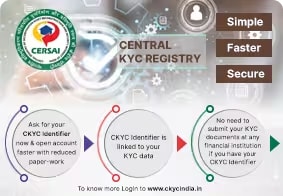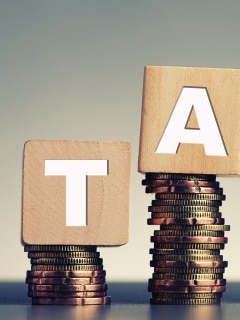Enjoy Zero Charges on All Commonly Used Savings Account Services
- About Us
- MD & CEO letter about the bank
- MD & CEO
- Our History
- Letter to Shareholders on the 1st Annual Report after Merger
- Letter to Shareholders on the 2nd Annual Report after Merger
- Letter to Shareholders on the 3rd Annual Report after Merger
- Letter to Shareholders on the 4th Annual Report after Merger
- Board of Directors
- Awards & Accolades
- News Room
- Investors
- Careers
- ESG
-
Customer care hotlineCall 1800 10 888
-
As per amendment in the Income Tax Rules, PAN or Aadhaar are to be mandatorily quoted for cash deposit or withdrawal aggregating to Rupees twenty lakhs or more in a FY. Please update your PAN or Aadhaar. Kindly reach out to the Bank’s contact center on 1800 10 888 or visit the nearest IDFC FIRST Bank branch for further queries.
-
-
FinFIRST Blogs
Savings Account
Will the new tax regime affect the way we invest?
Summary: The new tax regime boosts the spending capacity of India's middle class by swelling its disposable income. Analysts say people will ultimately move to the new regime because it makes tax planning and tax filing easier. However, any significant change in ground-level investing is unlikely. This is because the core concerns – saving for children’s future and one’s old age – remain the same. Read on to know more.
India's new tax regime has struggled to gain acceptance among taxpayers though it was introduced in the union budget three years ago. The last budget was an attempt to make it more attractive. However, despite the challenges, there are significant benefits of new tax regime that taxpayers can explore to optimize their financial planning and savings.
Also, from now on, if a taxpayer doesn't mention they are opting for the old regime, the new tax regime will become the default option. However, the government has not made it compulsory for taxpayers to switch to the new tax regime. In other words, the new regime continues alongside the old one.
This article highlights the new tax slabs before elaborating on the possible ramifications of the new tax regime.
READ MORE
Old and new tax slabs - A snapshot
The tax rates and slabs as per the old and new tax regime are -
Slab |
Old tax regime (until 31 March 2023) |
New tax regime (from 1 April 2023) |
Rs 0 - Rs 2,50,000 |
- |
- |
Rs 2,50,000 - Rs 3,00,000 |
5% |
- |
Rs 3,00,000 - Rs 5,00,000 |
5% |
5% |
Rs 5,00,000 - Rs 6,00,000 |
10% |
5% |
Rs 6,00,000 - Rs 7,50,000 |
10% |
10% |
Rs 7,50,000 - Rs 9,00,000 |
15% |
10% |
Rs 9,00,000 - Rs 10,00,000 |
15% |
15% |
Rs 10,00,000 - Rs 12,00,000 |
20% |
15% |
Rs 12,00,000 - Rs 12,50,000 |
20% |
20% |
Rs 12,50,000 - Rs 15,00,000 |
25% |
20% |
>Rs 15,00,000 |
30% |
30% |
The new tax regime has lowered the income tax rates but added more slabs. It has also removed all exemptions and deductions under various sections of the Income Tax Act, including Section 80C (tax saving instruments). The new tax regime has enhanced tax rebates to the income of Rs 7 lakh under Section 87A, which is applicable for 2023-24.
That apart, salaried taxpayers will continue to enjoy a standard deduction of Rs 50,000 under the new tax regime in 2023-24, just as they did in 2022-23.
Also read: Inflation demands unique investment strategies. Here’s a guide for beginners
What it means - The pros and the cons
Firstly, under the new tax regime, the tax liability is up to an income of Rs 7.5 lakh, thanks to the enhanced rebate and the Rs 50,000 standard deductions. This is a significant advantage over the old tax regime.
Secondly, the taxpayer can choose the regime for paying taxes.
The new regime does not make it compulsory to invest in tax-saving investments and insurance plans under Section 80C. It means people are not forced to invest here merely to get tax breaks, even though these investments and tax planning may not align with taxpayers’ financial goals.
On the plus side, the new tax regime offers taxpayers the flexibility to invest their money however they deem fit.
Also, tax calculation and operating under the new tax regime are expected to be more straightforward as taxpayers don’t have to invest and keep records just for deductions.
The multiple tax slabs are another considerable advantage. They make finding a tax slab nearest to the taxpayers' annual income easier.
The downside
Experts believe the new tax regime will lead to a revaluation of the current exemptions and the gradual obsolescence of the tax system. When that happens, and exemptions under Section 80C, etc. are removed, the total taxable amount will be higher compared to taxes on similar incomes under the old regime.
With tax-saving investments losing their relevance, the urge to save for the future – even if it is for tax breaks – could go away.
Also read: Major benefits of the new tax regime announced: Is the new tax regime better than the old one?
New regime, new opportunities
Under the new tax regime, taxpayers will find new disposable funds. For example, the enhanced rebate of up to Rs 7 lakh, as against Rs 5 lakh earlier under Section 87A, is a relief. Exploring the benefits of new tax regime can help taxpayers make informed decisions regarding their financial strategies and allocations.
Earlier, an individual with an annual income of Rs 9 lakh would have paid Rs 60,000 as income tax. Under the new tax regime, it is only Rs 45,000.
The surplus of Rs 15,000 can now be invested somewhere safe, such as the IDFC FIRST Bank Savings Account. The amount deposited here is not taxable and you also get the benefit of monthly compounding.
The finance minister proposed that high-value insurance purchases – which enjoyed tax-free status earlier – would subsequently be taxed.
As per her proposal, insurance products with over Rs 5 lakh premiums will be taxable. That, financial experts say, will benefit debt mutual funds.
According to them, HNI investments can be made in debt mutual funds instead of insurance products from 2023-24, as these will provide a better alternative. That is because the return potential is likely higher or equal to debt funds. Additionally, debt funds have the advantage of liquidity and taxation.
If an investor redeems their debt mutual funds after holding them for more than 36 months, the long-term capital gain comes into play and is taxed at 20% with an indexation benefit. However, if the fund is held for less than 36 months, short-term capital gains taxes are applied, per the investor’s tax slab.
Moreover, debt funds are more tax efficient than bank fixed deposits, which should attract investors.
Impact on ground investments
Experts say there will be some flow of investments from insurance to debt funds, but there won’t be any exodus. Nonetheless, the shift to the new tax regime could spell other potential effects on ground investments – for instance, regarding ELSS funds.
ELSS plans face a challenge on two fronts - first, the removal of deductions, which takes away their allure. Under the old system, taxpayers could claim deductions up to Rs 1.5 lakh under Section 80C for investments in ELSS funds in a financial year. That may not be the case anymore.
Second, the new tax regime does not need elaborate tax planning and enables easy tax payments. Plus, with the “compulsion” of tax saving investments under Section 80C gone, the old last-minute rush for ELSS funds is gone as well.
However, analysts say tax planning involves issues bigger than tax saving under Sections 80C and 80D. For instance, investing in one’s children’s future and saving for old age are going to remain part of tax planning, they argue.
Similarly, people will continue to invest in mutual funds instead of FDs (Fixed Deposits) so that their current income becomes capital gain and buy health insurance, though 80C deductions are gone.
Also read: Want to move to the new tax regime and stop ELSS funds? Think again!
What IDFC FIRST Bank offers
First, the savings account interest rate will help you earn passive income, depending on your deposit amount.
Second, this cash is liquid, meaning you can withdraw and reinvest in other safe instruments like fixed deposits, recurring deposits, or mutual funds.
Third, interest earned on your savings is deductible up to Rs 10,000 per financial year under Section 80TTA.
Conclusion
By doing away with tax saving investments and insurance plans under Section 80C, the new tax regime makes more funds available for the taxpayer. This means people have the option of spending this amount on buying material goods, partaking of leisure activities, or investing it.
If it is the latter, the new tax regime, like the old one, will need some tax planning, even if it is easy to operate. If you choose to invest, one convenient option is to open savings account online, which can serve as a starting point for your financial planning.
With IDFC FIRST Bank by your side, that should not be a problem.
Disclaimer
The contents of this article/infographic/picture/video are meant solely for information purposes. The contents are generic in nature and for informational purposes only. It is not a substitute for specific advice in your own circumstances. The information is subject to updation, completion, revision, verification and amendment and the same may change materially. The information is not intended for distribution or use by any person in any jurisdiction where such distribution or use would be contrary to law or regulation or would subject IDFC FIRST Bank or its affiliates to any licensing or registration requirements. IDFC FIRST Bank shall not be responsible for any direct/indirect loss or liability incurred by the reader for taking any financial decisions based on the contents and information mentioned. Please consult your financial advisor before making any financial decision.
The features, benefits and offers mentioned in the article are applicable as on the day of publication of this blog and is subject to change without notice. The contents herein are also subject to other product specific terms and conditions and any third party terms and conditions, as applicable. Please refer our website www.idfcfirstbank.com for latest updates.


 What's special about us
What's special about us




















